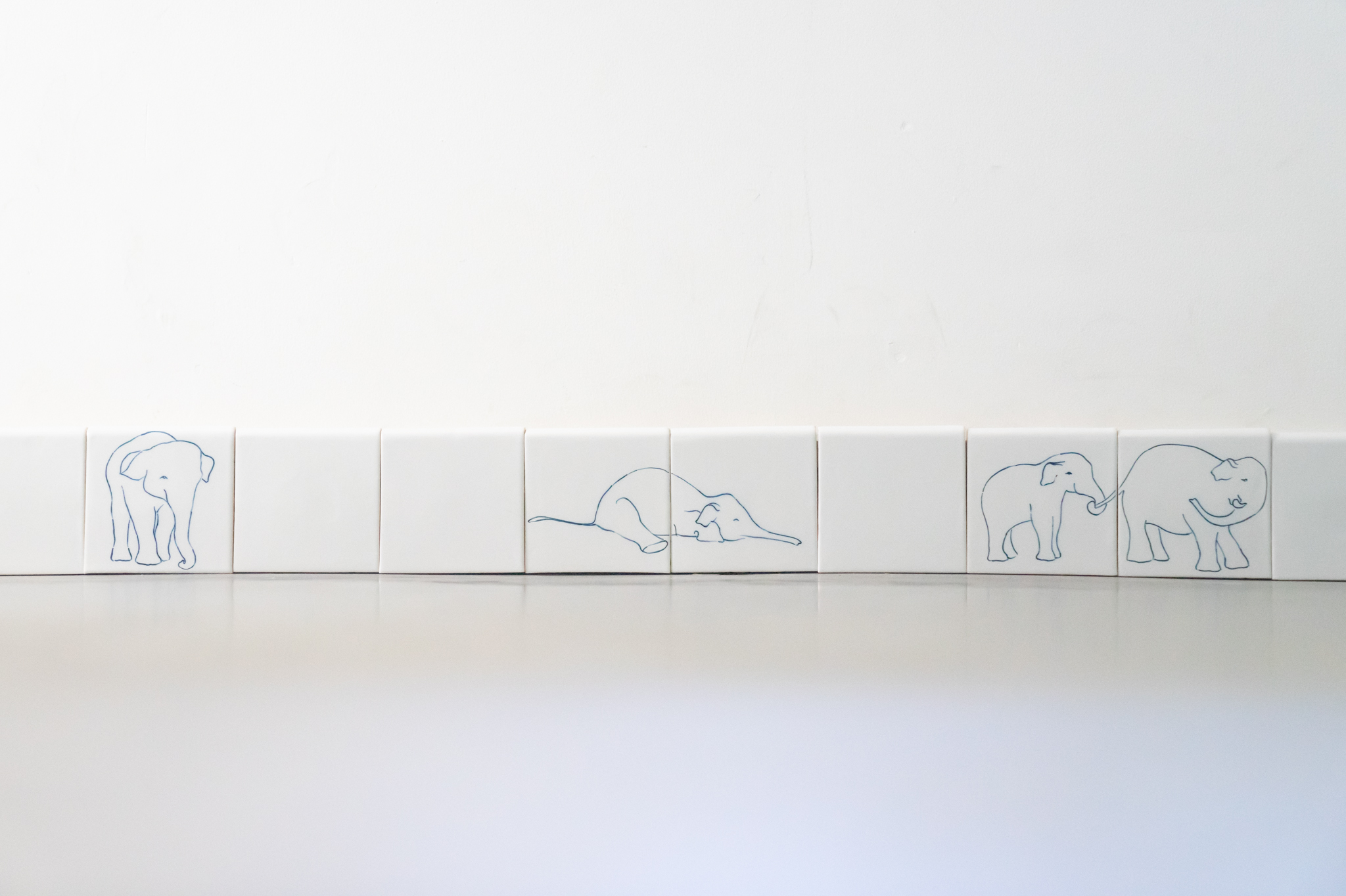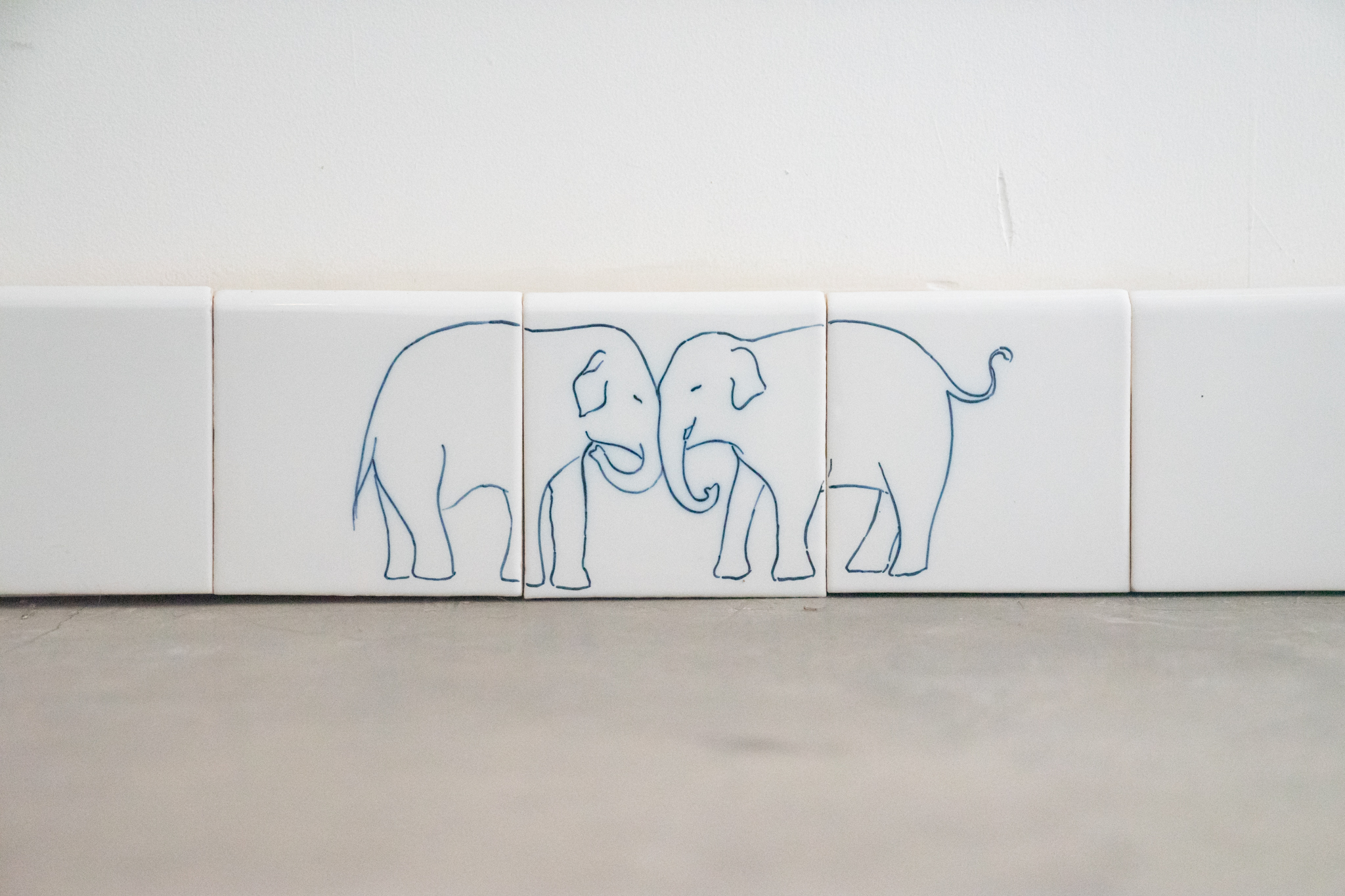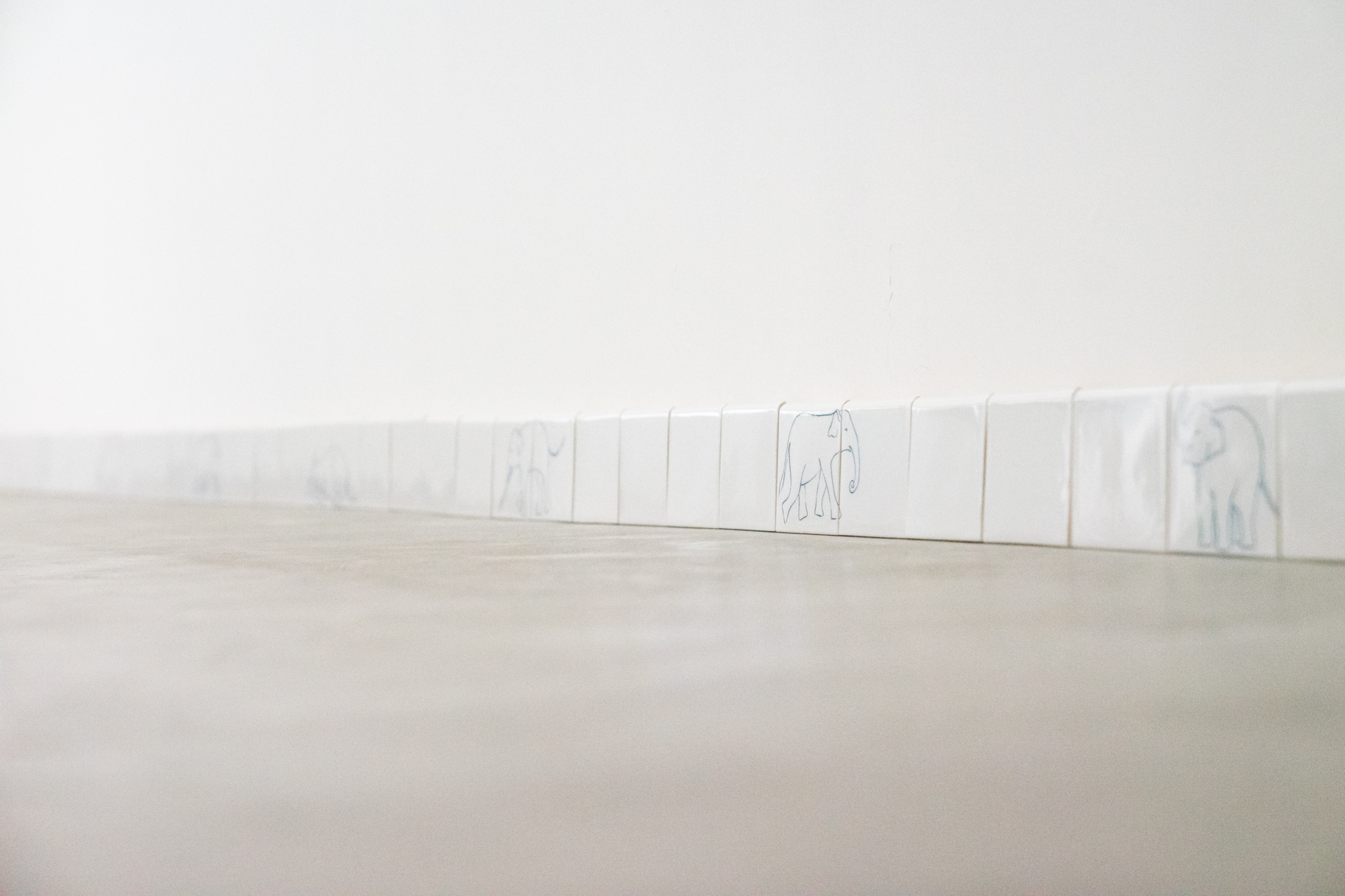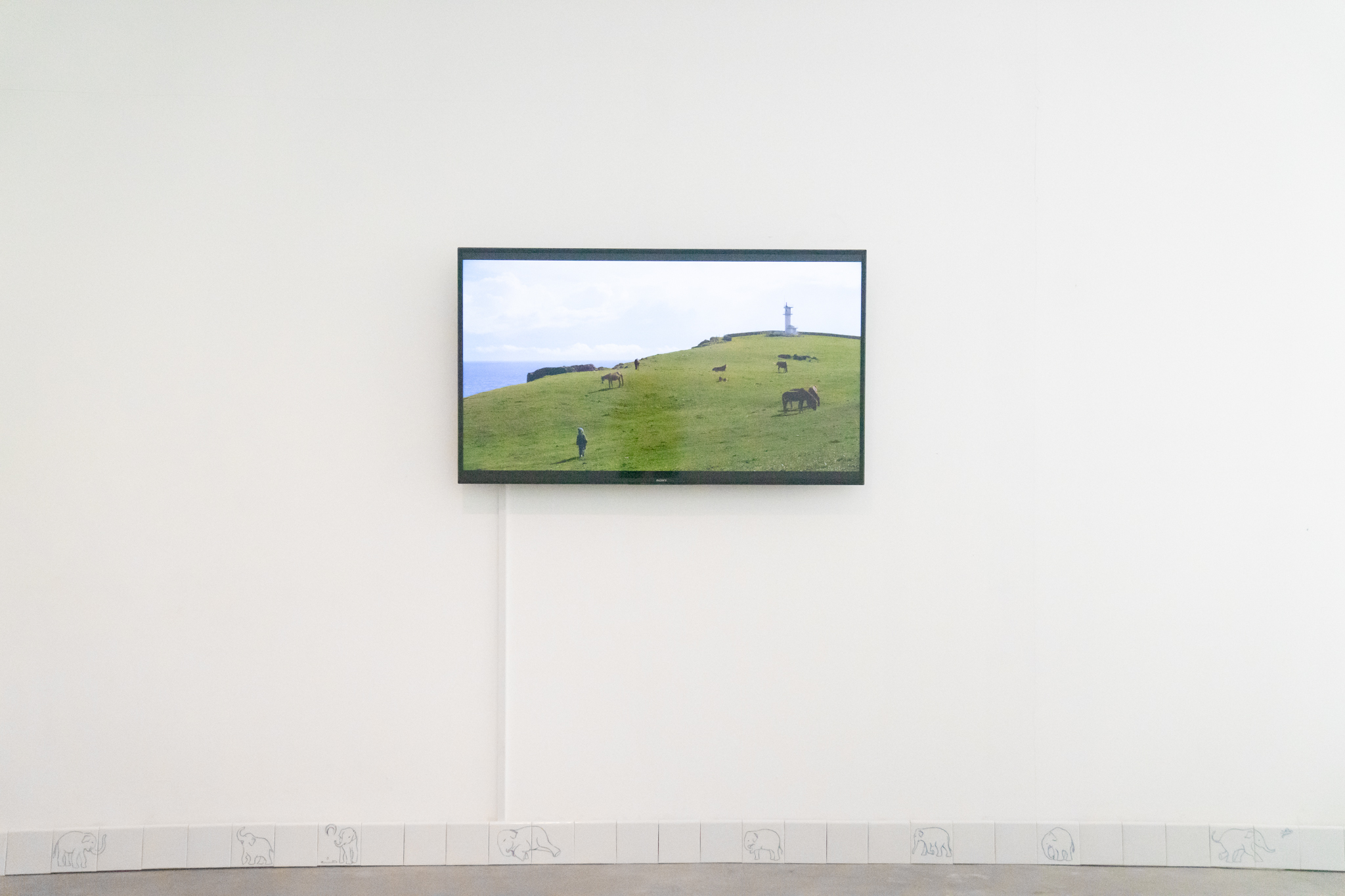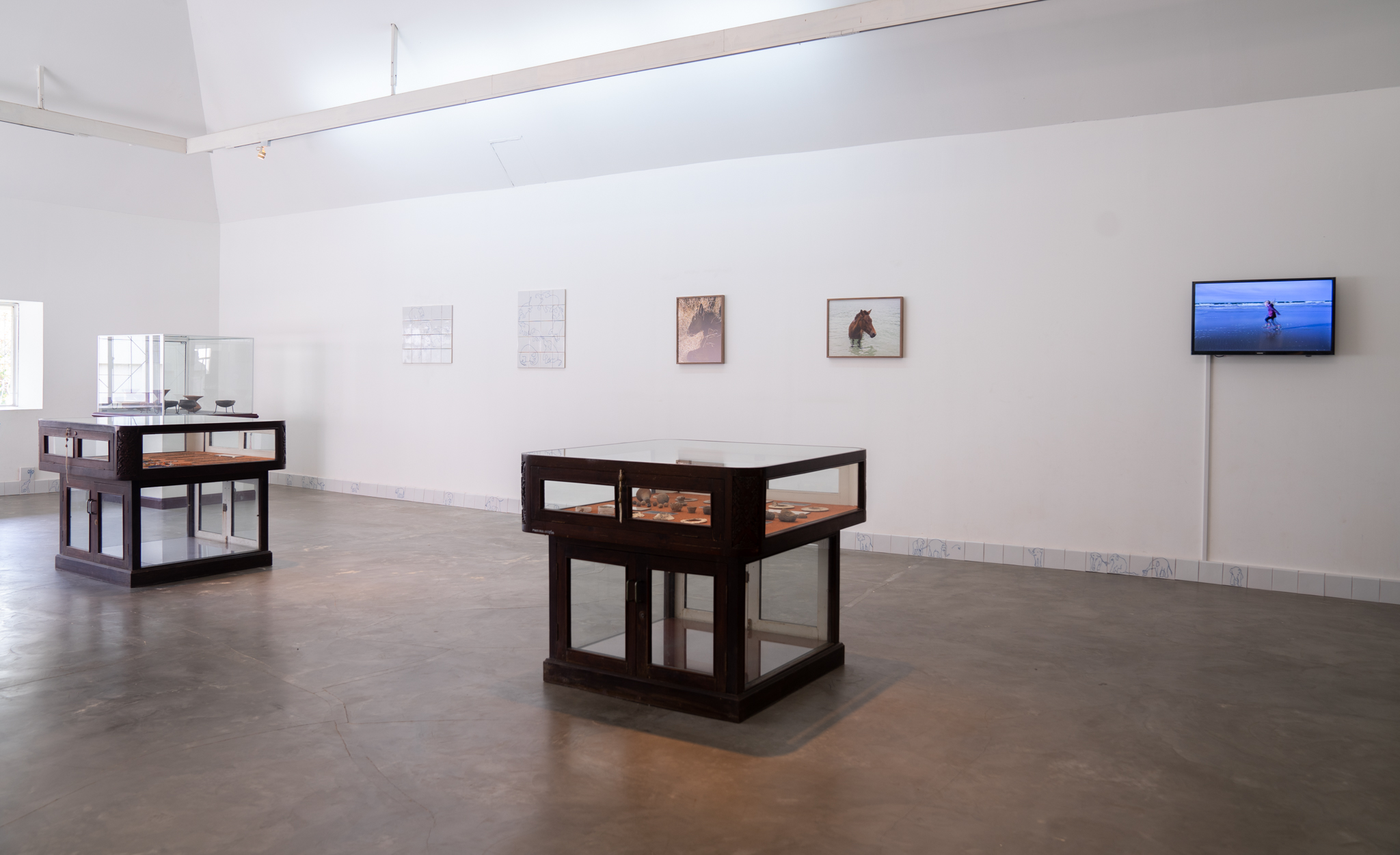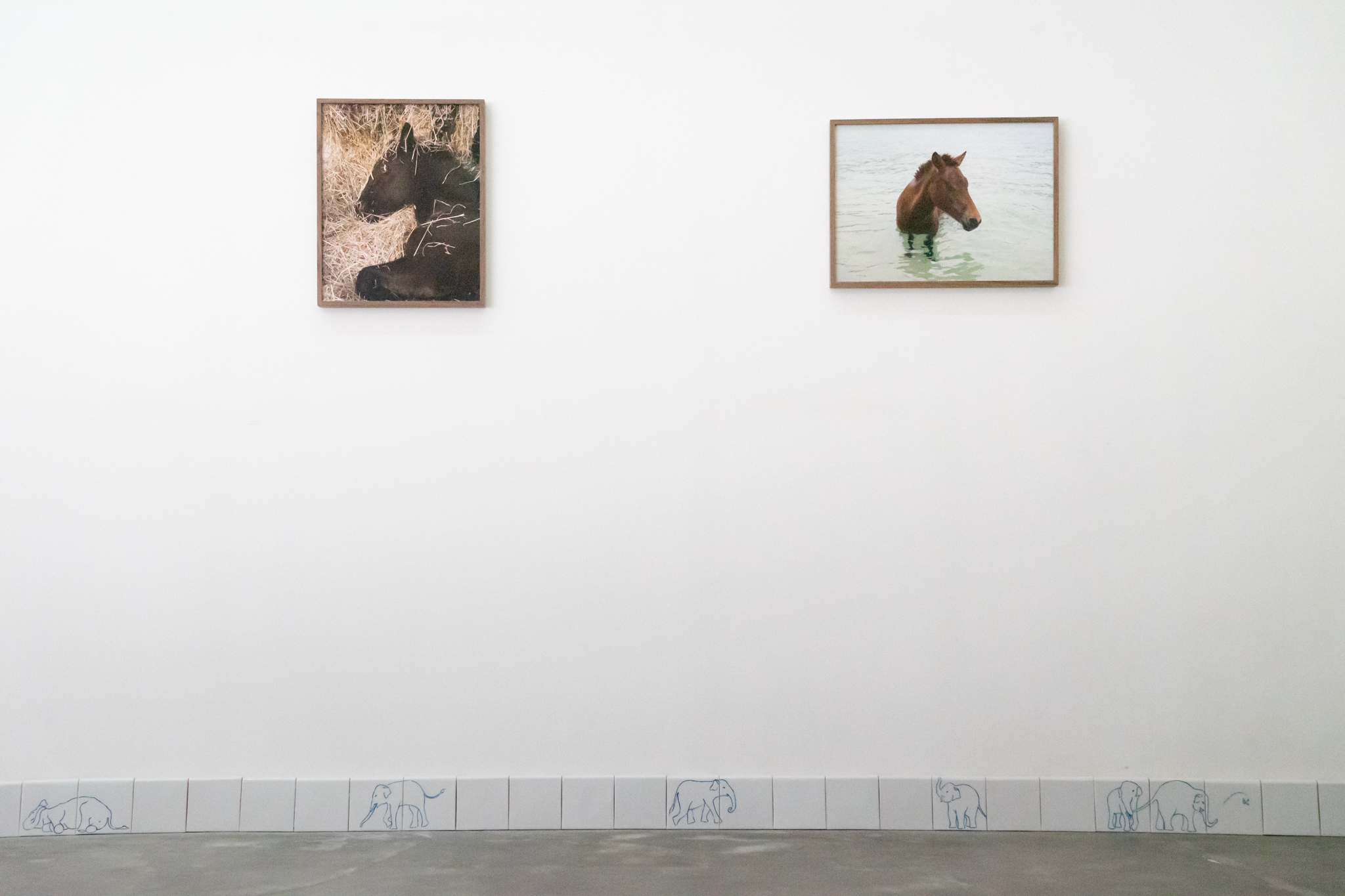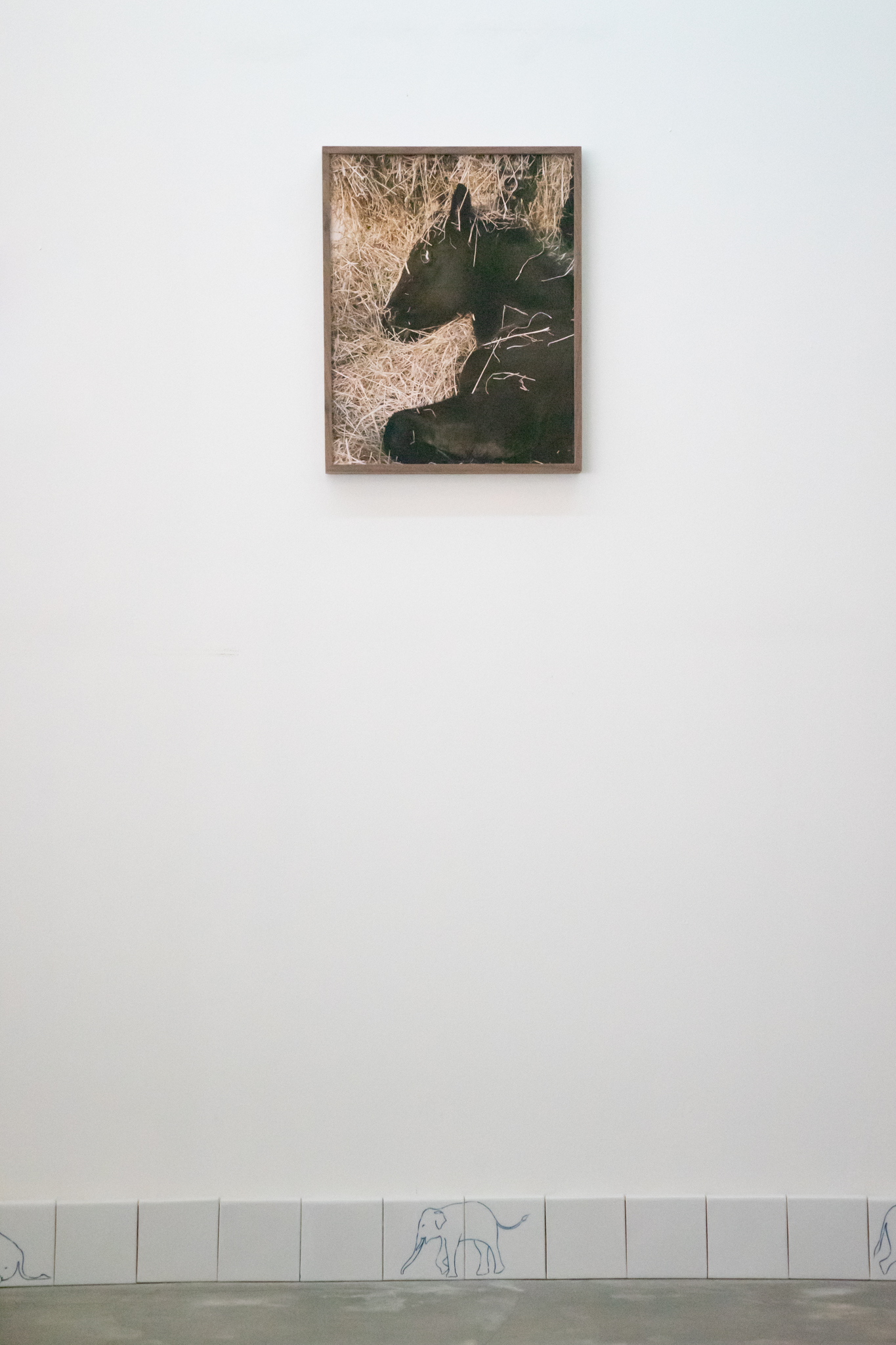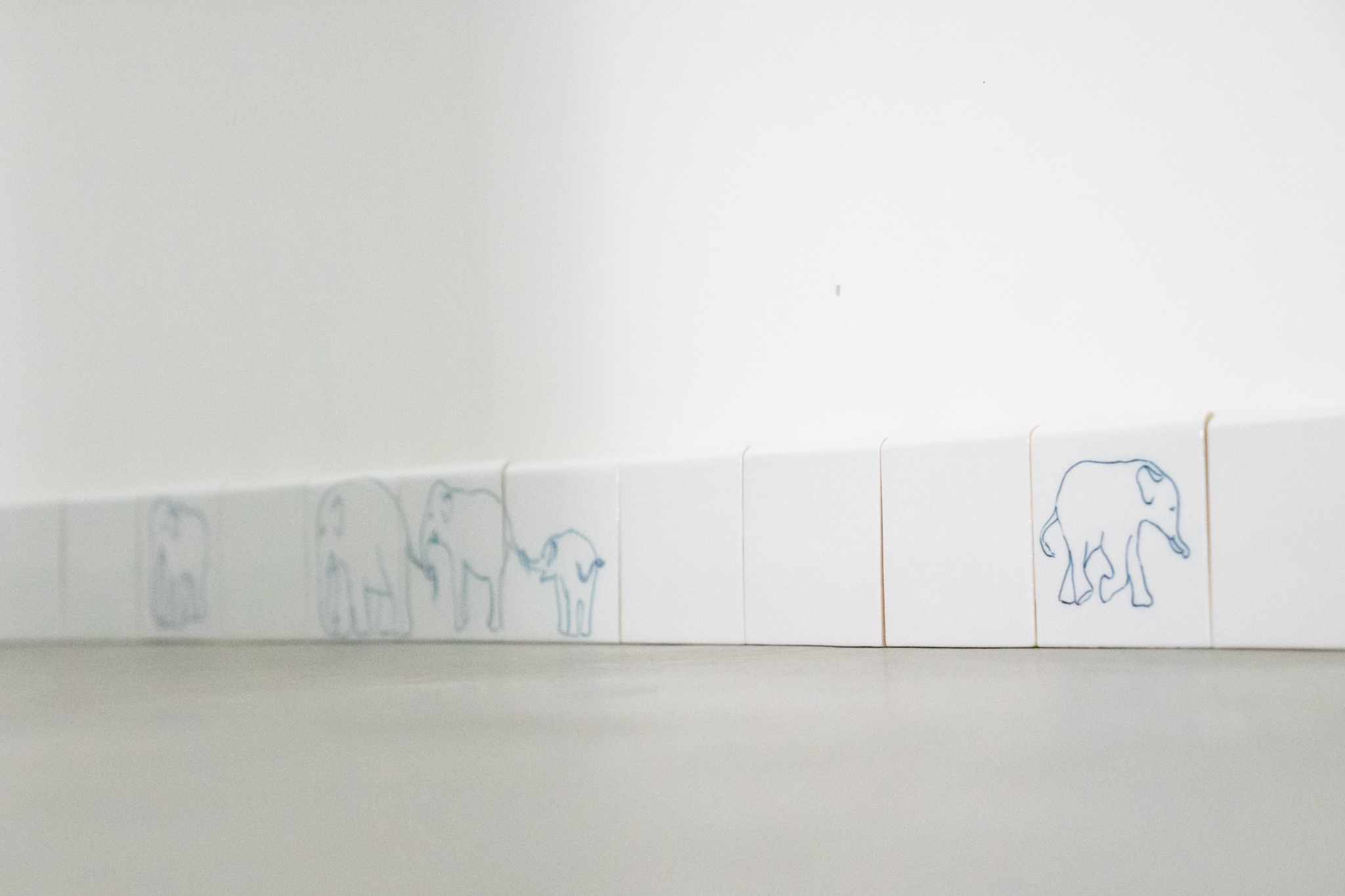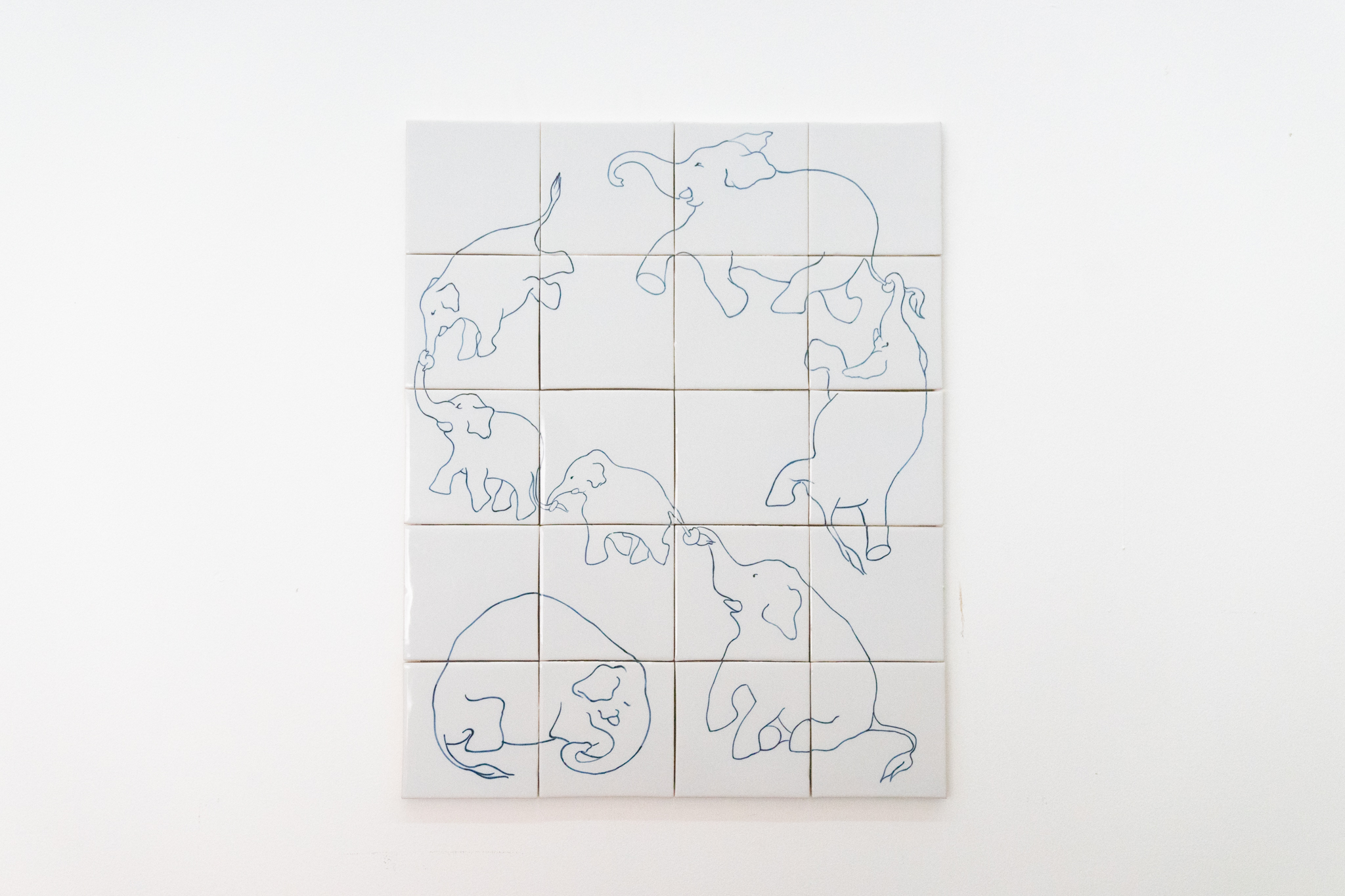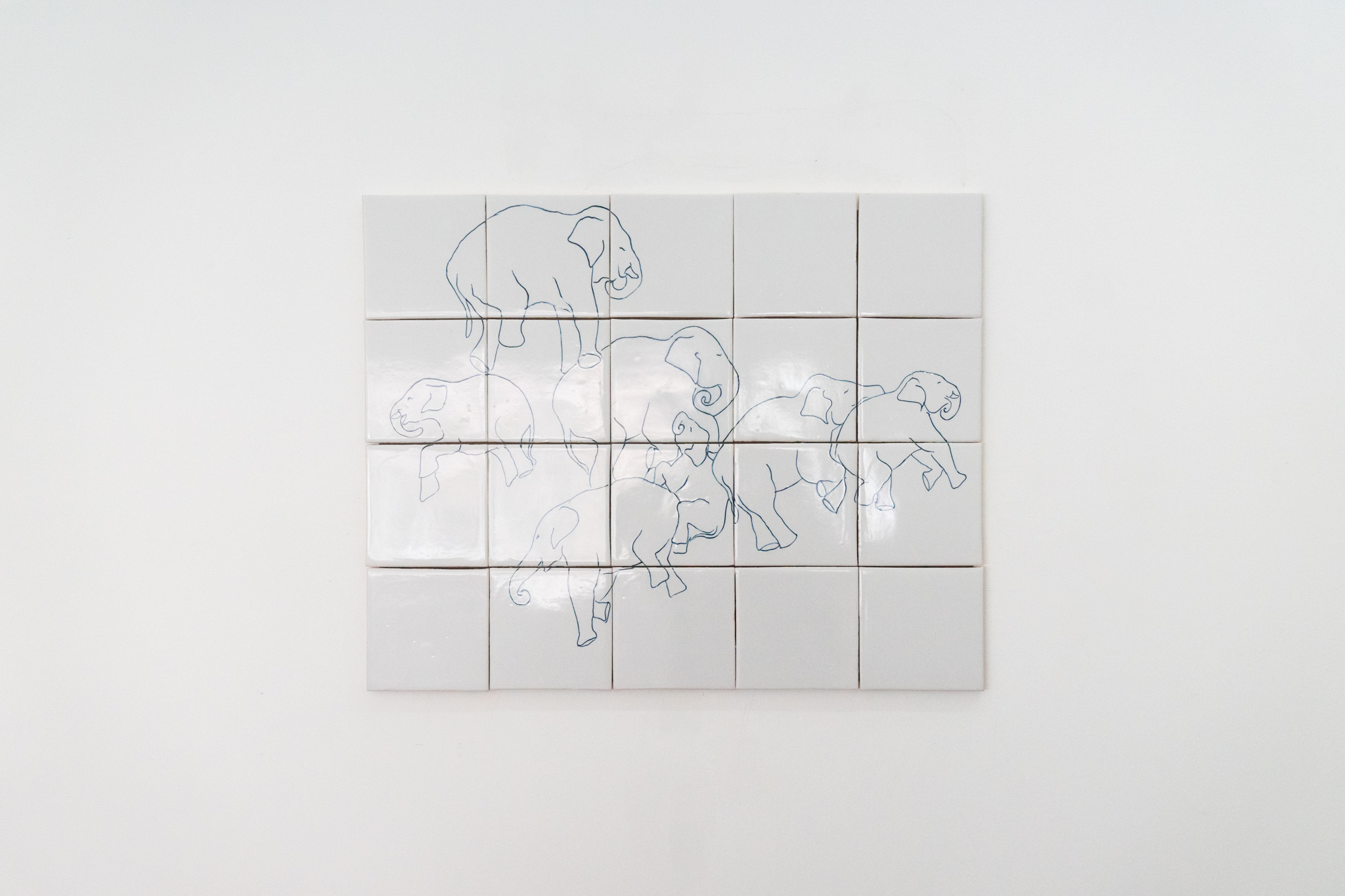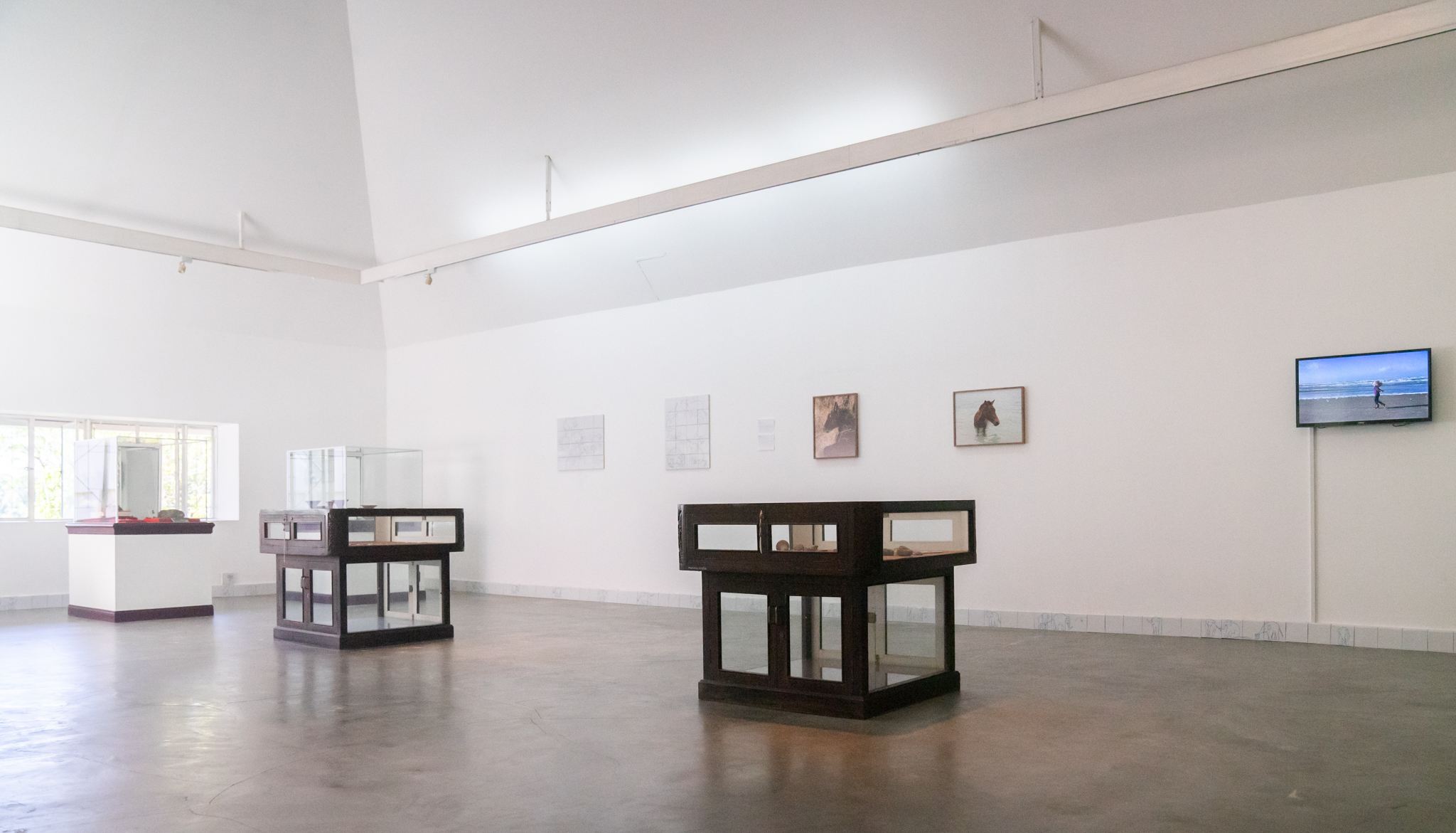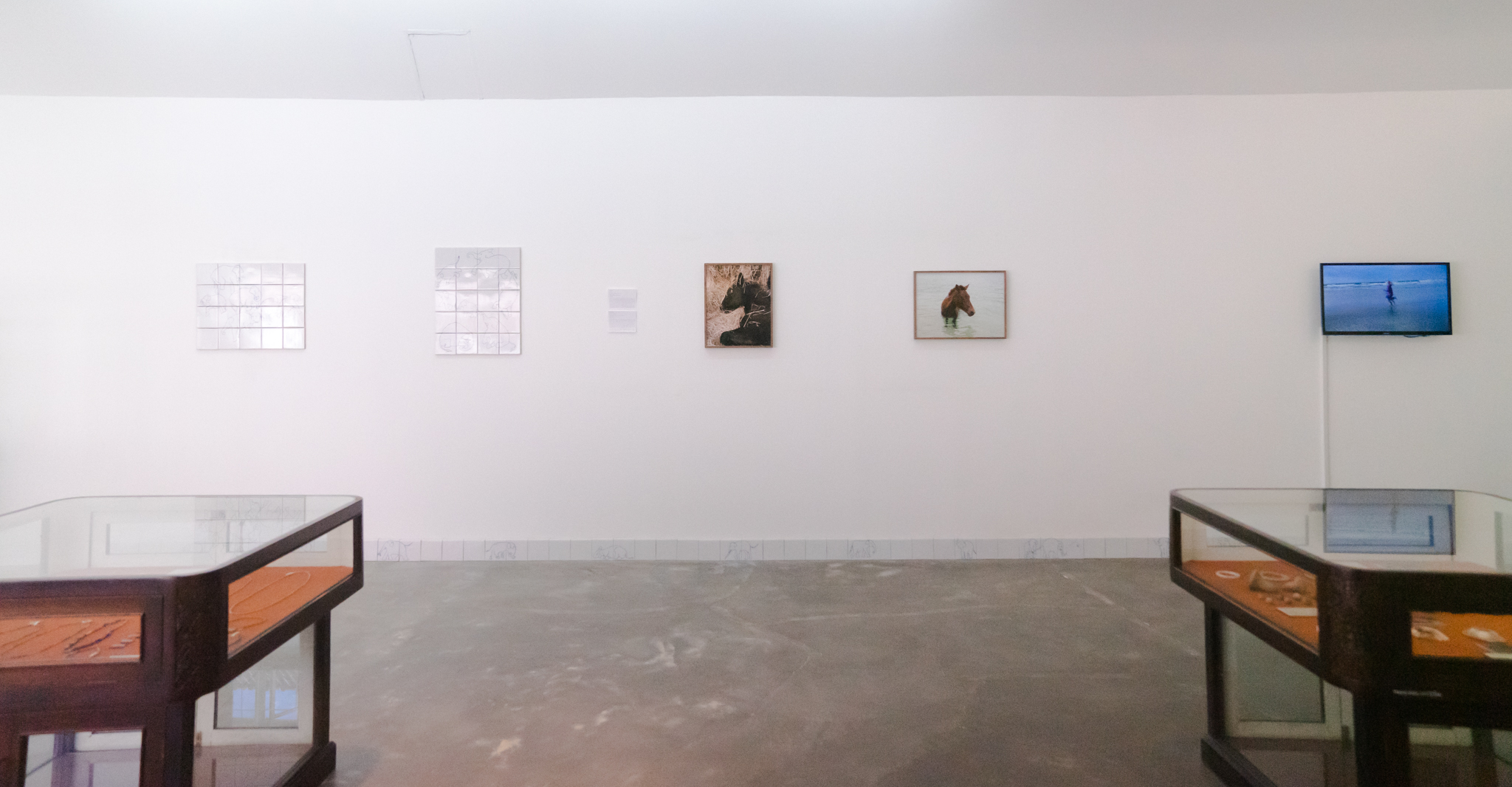Thailand Biennale, Korat 2021
Butterflies Frolicking on the Mud: Engendering Sensible Capital
December 18, 2021–March 31, 2022
Organizer: The Office of Contemporary Art and Culture, Ministry of Culture (OCAC)
Artistic Director: Yuko Hasegawa
Co-curators: Tawatchai Somkong, Vipash Purichanont, and Seiha Kurosawa
Contemplating Elephants, 2021
Video, photographs, digital print on ceramics
Dimension variable
Thailand Biennale, Korat 2021 commission
Dutch artist Charlotte Dumas focuses on the relationship between animals and humans in modern society. Since 2014, she has been involved in photographing native horses that still exist throughout Japan. Her installation created for Thailand Biennale, Contemplating Elephants, utilizes traditional ceramic tiles painted in the traditional Frisian blue. The starting point was a ceramic tile dating from 1645 depicting an elephant surrounded by Wan Li corners, A pattern adapted from Chinese porcelain. The elephant portrayed is the famous elephant Hansken. She as the first elephant to be brought to the Netherlands in 1633 and was drawn often by Rembrandt van Rijn.
She was known to be Rembrandt’s favorite model, and this tile shows the historical reception and representation of the elephant in the Netherlands.It’s apparent that the drawings made by Western artists drawn from life in those days were of Elephants in captivity. Like Hansken they were taken from their natural habitat and transported to be exhibited in zoos.
Human kind has heavily depended upon Elephant as a force of labour. In this sense the elephants relate to horses, donkeys and camels as beasts of burden. They carried and pulled heavy cargo, lifted and unrooted trees for our benefit. Even erected the circus tents they would perform in.
‘In many ways we have lost our ability to take part of nature, to see we are in fact part of nature. Not by reflecting our place towards it from a distance but to actively acknowledge our place within it, we will be able to properly care and take responsibility for our surroundings. We are helplessly alone if it were just up to us and we will suffocate without the existence of the biodiversity that is dwindling at such speed we can foresee its ending if nothing changes.
Children often relate to animals in an intuitive and direct way. They have no trouble feeling part of all sentient beings. They are our connection to the natural world. Ultimately it may be one of our deepest wishes and longing to connect to the living other, to feel kinship with species outside our own.’
Through communication with her seven-year-old daughter, Dumas also realizes the direct relationship between children and animals; how children understand creatures in nature. This observation has led to finding a new and nuanced approach to humans and animals.
Dumas’ installation shows an elephant procession using traditional Dutch hand painted glazed tiles, combined with past video and photographic works focusing on the sensory communication of the interspecies relationships between humans and animals.
